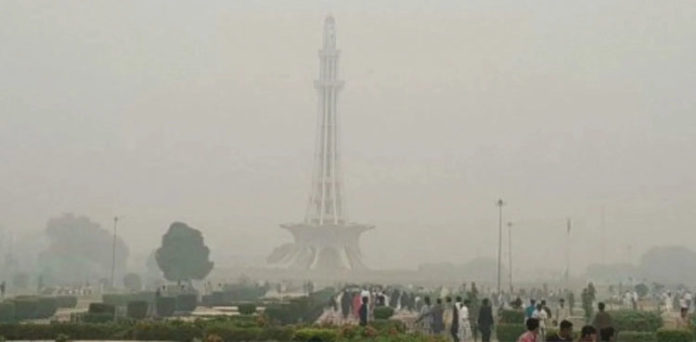The city remains the most polluted in the world according to the air quality index (AQI) causing breathing problems for citizens.
Indian capital city New Delhi has been the second most polluted city in the world with 428 AQI readings.
Punjab government yesterday announced the closure of schools up to the higher secondary level in smog-hit districts of the province till 17 November.
The schools remain closed in Lahore, Sheikhupura, Kasur, Nankana Sahib, Gujranwala, Gujrat, Hafiz Abad, Mandi Bahauddin, Sialkot, Narowal, Faisalabad, Chinniot, Jhang, Toba Tek Singh, Multan, Lodharan, Vehari and Khanewal districts.
The decision was made as the province grappled with severe air pollution levels, which have soared to alarming levels, affecting public health, especially children.
Lahore has been consistently ranked top among the most polluted cities globally, prompting urgent action from authorities.
Senior provincial minister Marriyum Aurangzeb said that the air direction from India has been towards Lahore for one week resulting in increasing smog. “This issue could not be resolved without talking to India.”
Winds blowing from India have a direction towards Lahore secretary of Environment Protection has said
“Polluted eastern winds, blowing from India, have a direction towards Lahore,” Secretary Environment Protection Agency, Jahangir Anwar, has said.
“This polluted air has added to smog in Lahore and given an extraordinary boost to the AQI reading,” Anwar said.
Talking to AFP earlier, a senior environmental protection official said, “We have never reached a level of 1,000.”
For days, Lahore has been enveloped by smog, a mix of fog and pollutants caused by low-grade diesel fumes, smoke from seasonal agricultural burning, and winter cooling.
Air pollution in Lahore soared on Saturday more than 80 times over the level deemed acceptable by the World Health Organization (WHO), AFP said in a report.
The level of deadly PM2.5 pollutants — fine particulate matter in the air that causes the most damage to health — peaked at 1,067, before dropping to around 300 in the morning, with anything above 10 considered unhealthy by the WHO.

Mutib Khalid is a skilled content writer and digital marketer with a knack for crafting compelling narratives and optimizing digital strategies. Excel in creating engaging content that drives results and enhances online presence. Passionate about blending creativity with data-driven approaches, Mutib Khalid helps brands connect with their audience and achieve their goals.







